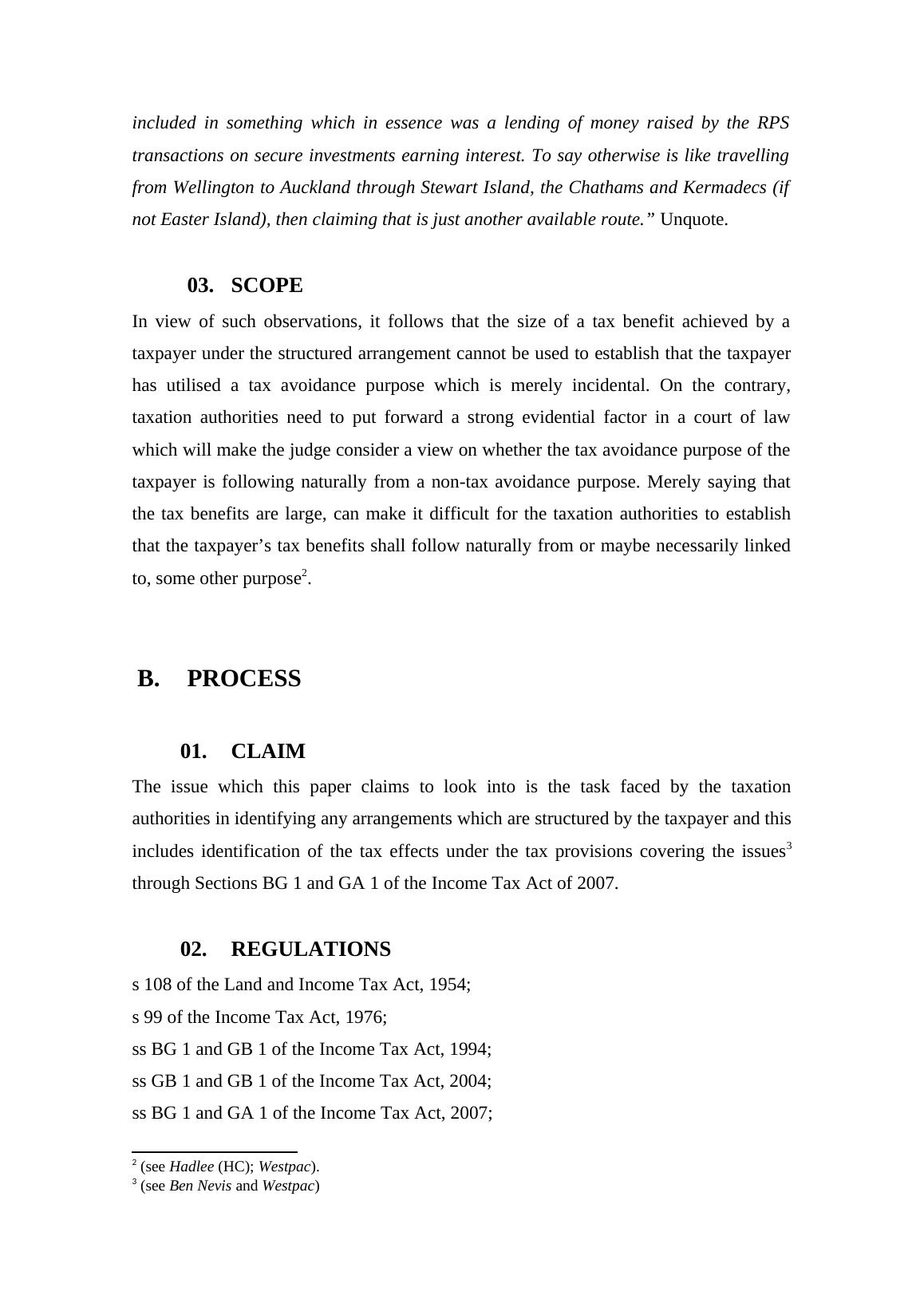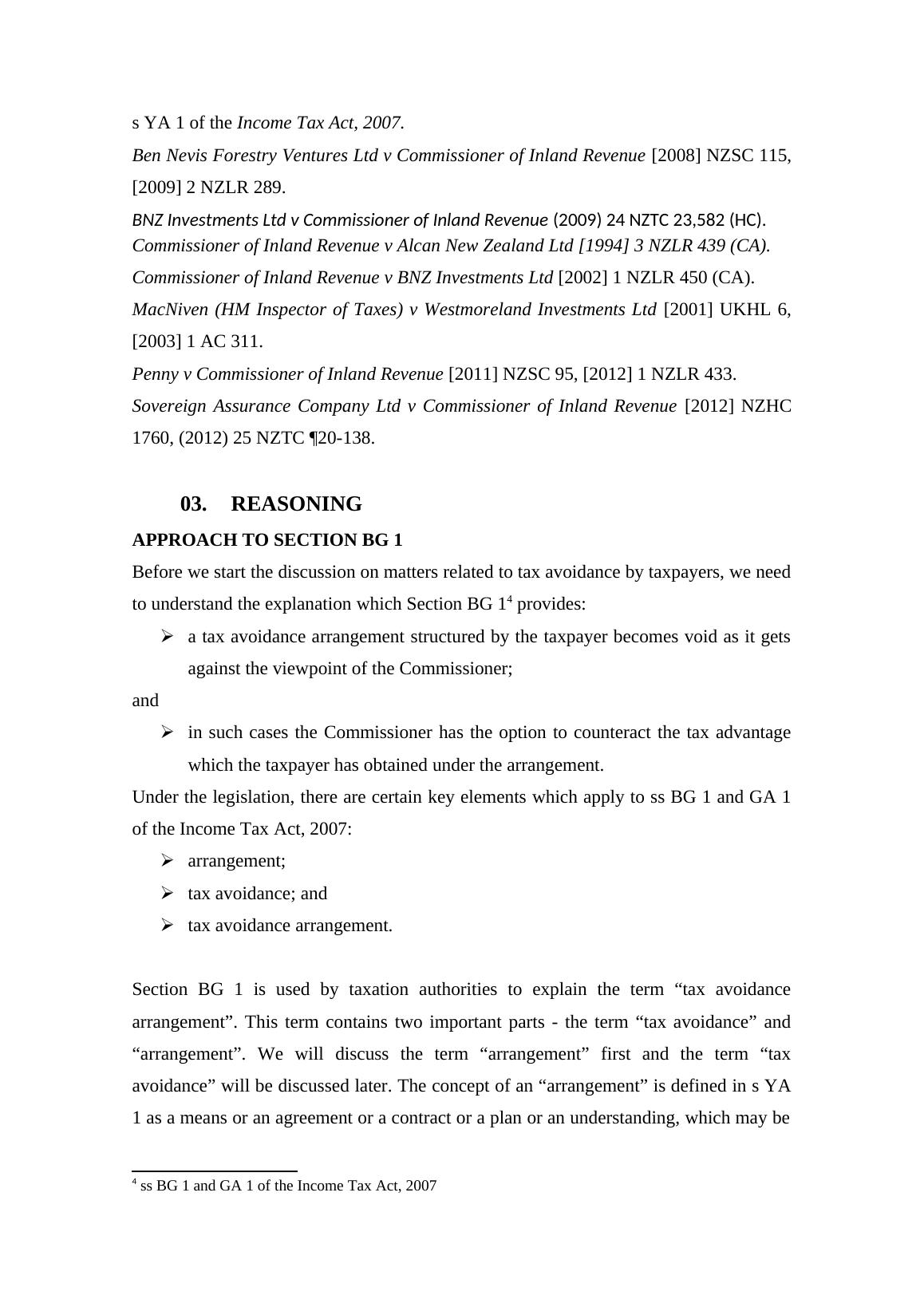New Zealand Taxation | Assignment
Added on 2019-11-19
8 Pages3001 Words300 Views
NEW ZEALAND TAXATIONA.INTRODUCTION1.BACKGROUNDThe issue of tax-avoidance is like a double-edged sword in the hands of the taxauthorities. It becomes difficult, for both the taxpayers as well as the authorities, todifferentiate between the genuine use of the complying conditions and the actualcompliance of the regulations. In certain cases, a taxpayer may put forth a tax-avoidanceproposal as a non-tax avoidance proposal to escape the tax net. In some cases, thishappens because the margins from investments are too low for the taxpayer. However,when a taxpayer is opting for a better rate of return by investments not being subject totaxation because of tax avoidance use of the Act, then the purpose of the taxpayer is totake undue advantage of tax avoidance regulations. 2.OBJECTIVESIn the view of the Commissioner, this is also shown through the lawsuit of Challenge(CA) and is also consistent with the approach which the Australian High Court adoptedin the case of Federal Commissioner of Taxation v Spotless Services Ltd (1996) 186CLR 404. Even McGechan J has also spoken about how such an arrangement wasstructured in the case of Elmiger(HC)1, and I quote: “I am quite unable to accept submission (a). Clearly, and at the very least, one of thepurposes or effects of the downstream transactions was tax avoidance, and that was nota merely incidental purpose or effect. One need not look very far. There was, of course,an ordinary business purpose or a degree of ordinary business purpose in what wasdone. Fay Richwhite and CML intended to make profits. That is true in all business,including business carried forward in a tax effective way: it is not done for amusementor to tantalise the tax man. They went about it, however, in a way which - tax factorsapart - was extraordinarily and unnecessarily complicated. There was no reason - taxfactors apart - for the elaborate downstream chain and auxiliary activities being1Elmiger v Commissioner of Inland Revenue [1966] NZLR 683 (SC) at 687–688.

included in something which in essence was a lending of money raised by the RPStransactions on secure investments earning interest. To say otherwise is like travellingfrom Wellington to Auckland through Stewart Island, the Chathams and Kermadecs (ifnot Easter Island), then claiming that is just another available route.” Unquote.3.SCOPEIn view of such observations, it follows that the size of a tax benefit achieved by ataxpayer under the structured arrangement cannot be used to establish that the taxpayerhas utilised a tax avoidance purpose which is merely incidental. On the contrary,taxation authorities need to put forward a strong evidential factor in a court of lawwhich will make the judge consider a view on whether the tax avoidance purpose of thetaxpayer is following naturally from a non-tax avoidance purpose. Merely saying thatthe tax benefits are large, can make it difficult for the taxation authorities to establishthat the taxpayer’s tax benefits shall follow naturally from or maybe necessarily linkedto, some other purpose2.B.PROCESS1.CLAIMThe issue which this paper claims to look into is the task faced by the taxationauthorities in identifying any arrangements which are structured by the taxpayer and thisincludes identification of the tax effects under the tax provisions covering the issues3through Sections BG 1 and GA 1 of the Income Tax Act of 2007.2.REGULATIONSs 108 of the Land and Income Tax Act, 1954;s 99 of the Income Tax Act, 1976;ss BG 1 and GB 1 of the Income Tax Act, 1994;ss GB 1 and GB 1 of the Income Tax Act, 2004; ss BG 1 and GA 1 of the Income Tax Act, 2007;2 (see Hadlee (HC); Westpac). 3 (see Ben Nevis and Westpac)

s YA 1 of the Income Tax Act, 2007.Ben Nevis Forestry Ventures Ltd v Commissioner of Inland Revenue [2008] NZSC 115,[2009] 2 NZLR 289.BNZ Investments Ltd v Commissioner of Inland Revenue (2009) 24 NZTC 23,582 (HC).Commissioner of Inland Revenue v Alcan New Zealand Ltd [1994] 3 NZLR 439 (CA).Commissioner of Inland Revenue v BNZ Investments Ltd [2002] 1 NZLR 450 (CA).MacNiven (HM Inspector of Taxes) v Westmoreland Investments Ltd [2001] UKHL 6,[2003] 1 AC 311.Penny v Commissioner of Inland Revenue [2011] NZSC 95, [2012] 1 NZLR 433.Sovereign Assurance Company Ltd v Commissioner of Inland Revenue [2012] NZHC1760, (2012) 25 NZTC ¶20-138.3.REASONINGAPPROACH TO SECTION BG 1Before we start the discussion on matters related to tax avoidance by taxpayers, we needto understand the explanation which Section BG 14 provides:a tax avoidance arrangement structured by the taxpayer becomes void as it getsagainst the viewpoint of the Commissioner;andin such cases the Commissioner has the option to counteract the tax advantagewhich the taxpayer has obtained under the arrangement.Under the legislation, there are certain key elements which apply to ss BG 1 and GA 1of the Income Tax Act, 2007:arrangement;tax avoidance; andtax avoidance arrangement.Section BG 1 is used by taxation authorities to explain the term “tax avoidancearrangement”. This term contains two important parts - the term “tax avoidance” and“arrangement”. We will discuss the term “arrangement” first and the term “taxavoidance” will be discussed later. The concept of an “arrangement” is defined in s YA1 as a means or an agreement or a contract or a plan or an understanding, which may be4 ss BG 1 and GA 1 of the Income Tax Act, 2007

End of preview
Want to access all the pages? Upload your documents or become a member.
Related Documents
New Zealand Tax: Tax Benefits vs Tax Avoidancelg...
|13
|4584
|425
Taxationlg...
|12
|3461
|32
Principles of Income Tax Law - Deskliblg...
|16
|4251
|259
Negative Gearing Policy: Arguments Againstlg...
|16
|4298
|108
Australian Tax Implications for Expatriates Living in Other Countrieslg...
|9
|2585
|96
Taxation Law Australia Case Study 2022lg...
|12
|2471
|13
